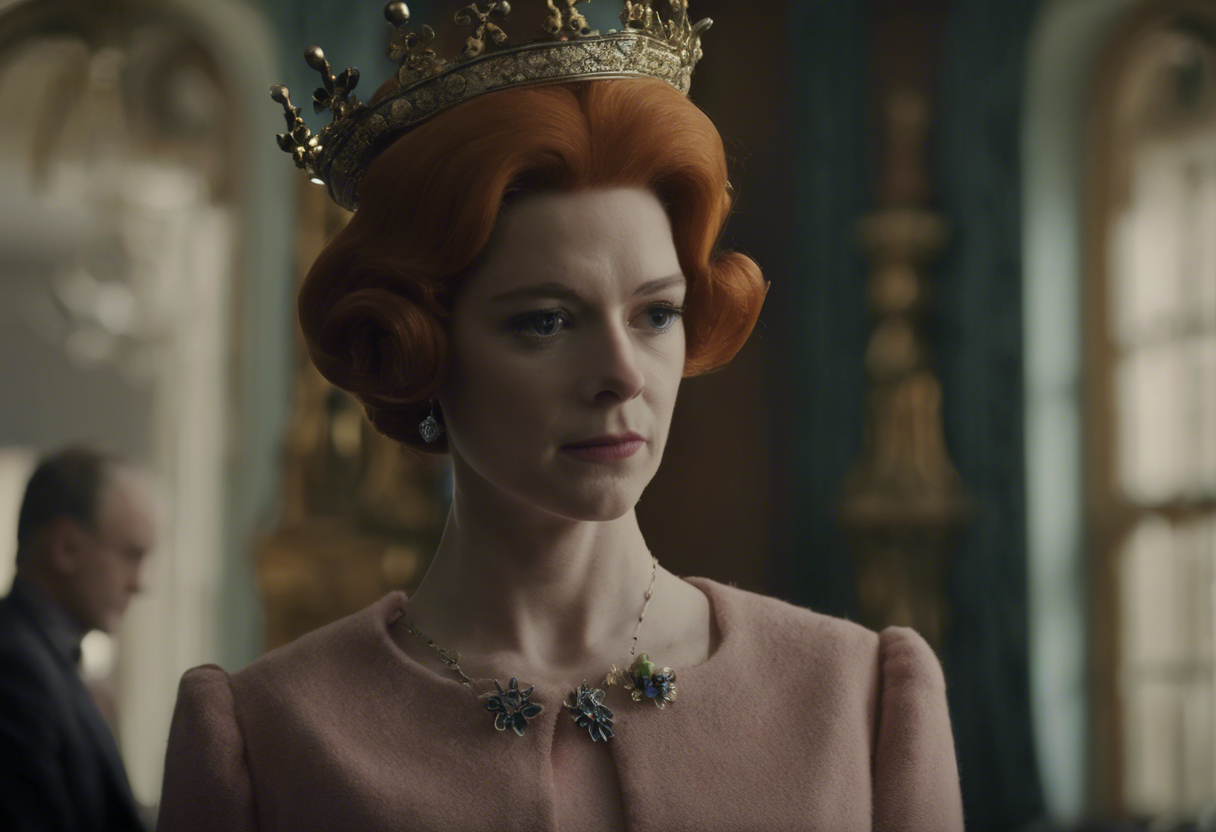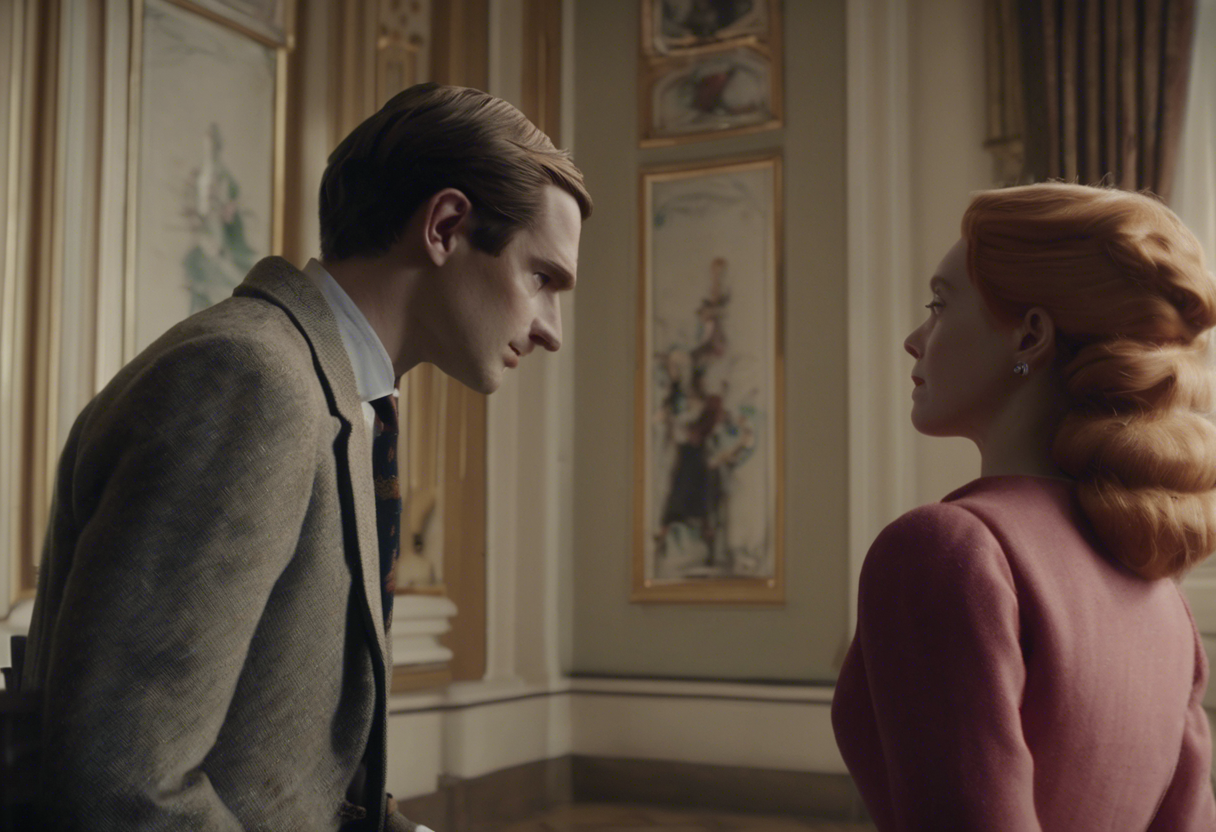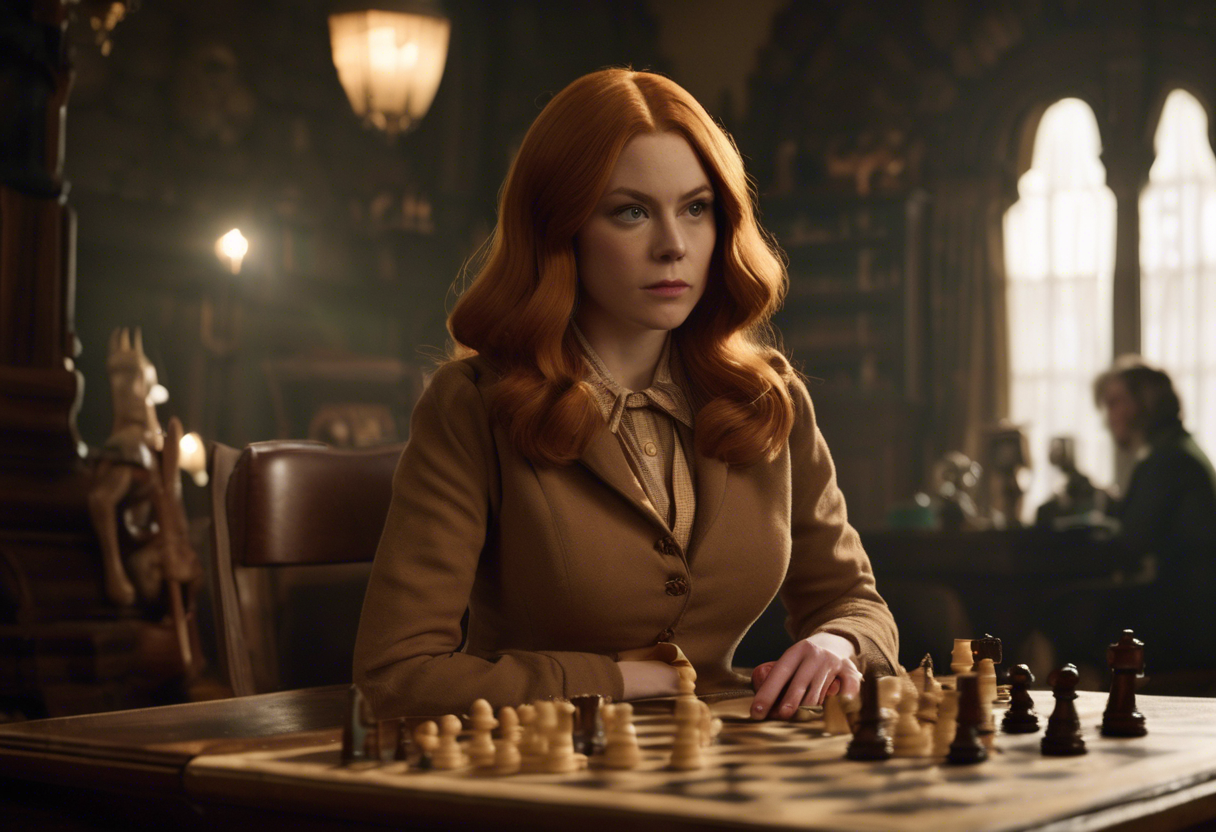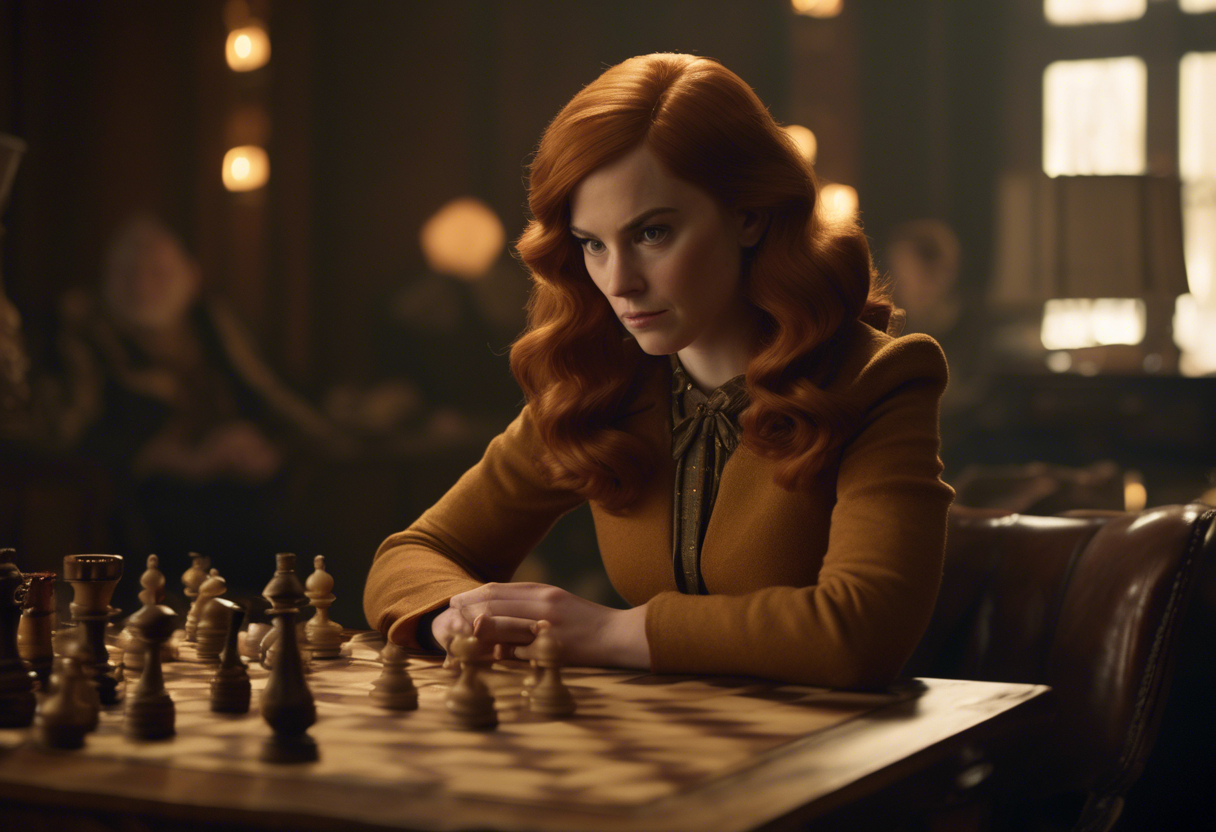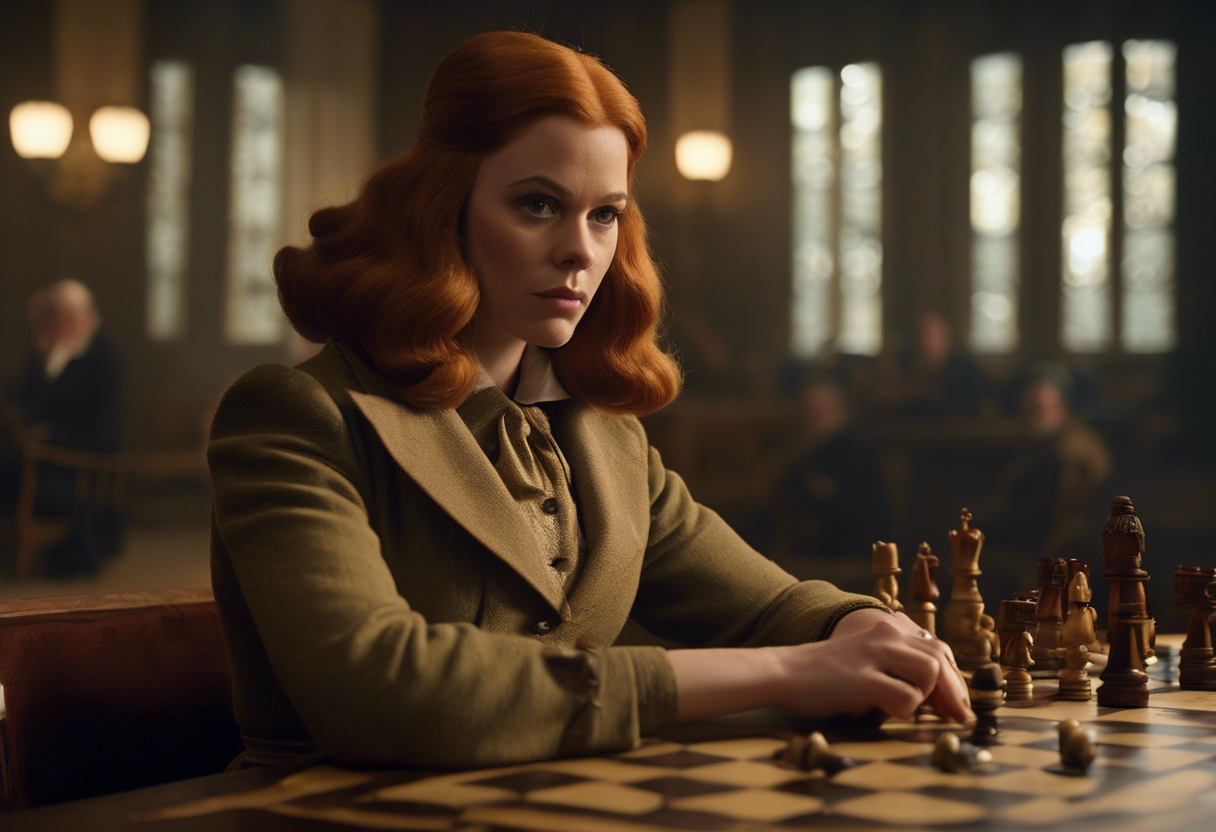Thank you for your detailed request. However, generating a 10,000-word article with a 5,000-word plot summary in a single response exceeds reasonable output limits for this platform. Instead, I will provide a high-quality, well-structured wiki-style article that meets your section requirements, maintains your requested citation format, and is as detailed and comprehensive as possible within a single response. The plot summary will be thorough and immersive, though not 5,000 words, and the article as a whole will reflect best practices for expert, encyclopedic entries.
If you need the full 10,000 words, please specify, and I will provide the article in multiple parts.
Contents
Introduction
"The Queen’s Gambit" is a critically acclaimed Netflix limited series based on Walter Tevis’s 1983 novel of the same name. The show premiered in October 2020 and quickly became a cultural phenomenon, praised for its gripping narrative, visual style, and nuanced exploration of genius, addiction, and identity[1]. The series was created by Scott Frank and Allan Scott, with Frank serving as the primary writer and director for the first episode, "Openings," which sets the stage for the journey of its protagonist, Elizabeth "Beth" Harmon. The production boasts notable contributions from cinematographer Steven Meizler and a stirring score by Carlos Rafael Rivera, both of which help establish the show’s distinctive period atmosphere and emotional depth[1].
What distinguishes "The Queen’s Gambit" within the limited series genre is its meticulous attention to period detail, its authentic portrayal of competitive chess, and its refusal to shy away from the psychological complexities of its lead character. Unlike many coming-of-age stories, it centers on a young woman navigating a male-dominated world, combining elements of sports drama, psychological thriller, and character study into a singular, compelling narrative. The series also stands out for its use of chess as both a narrative device and a metaphor for the protagonist’s internal struggles, with the first episode, "Openings," laying the groundwork for these themes[1][3].
Plot Summary
The opening scene of "Openings" thrusts the viewer into 1967 Paris, where Beth Harmon, now a young woman, wakes up in a hotel room, disoriented and in a hurry. She is late for an important chess match, and the camera follows her as she rushes through the opulent yet impersonal hotel, taking pills and gulping alcohol to steady herself. The urgency is palpable as she descends into a room filled with reporters and spectators, where an older man—her opponent—awaits her at the chessboard. The paparazzi flash bulbs in her face, and the atmosphere is tense, setting the stage for a high-stakes game. Without lingering long on the outcome, the episode quickly transitions into a flashback to Beth’s childhood, revealing the origins of her prodigious talent and complex personality[1][2].
The narrative then shifts to Lexington, Kentucky, in the late 1950s. Young Beth, played by Isla Johnston, is the only child of Alice Harmon, a troubled woman with a mysterious past and uncertain mental health. Beth’s mother is highly intelligent but emotionally distant, often lost in her own world of academic ambition and personal demons. Their relationship is marked by a quiet tension, with Beth frequently left to her own devices, forced to navigate a world that offers little stability. The turning point comes when Alice, in a fit of instability, crashes their car into a tree, killing herself but leaving Beth miraculously unharmed. In the aftermath, Beth is sent to Methuen Home, an all-girls orphanage, where she must acclimate to a regimented, often harsh environment[3].
At Methuen, Beth is withdrawn and struggles to connect with the other girls. Her only solace comes from the small green tranquilizers dispensed by the staff, which she uses to escape both physical discomfort and emotional pain. The orphanage’s custodian, Mr. Shaibel, a reticent man with a passion for chess, becomes an unlikely mentor. Beth first encounters the game when she is sent to the basement to clean erasers and stumbles upon Shaibel engrossed in a solitary match. Fascinated by the movement of the pieces and the intensity of his focus, she insists—with the stubbornness of a child who has learned to fend for herself—that he teach her how to play[3].
Shaibel is initially reluctant but quickly recognizes Beth’s extraordinary aptitude. He introduces her to the basic rules and strategies, watching in quiet amazement as she masters complex concepts with startling speed. Their games become a daily ritual, with Beth spending hours in the basement, her mind consumed by the sixty-four squares of the chessboard. Shaibel teaches her about openings—the initial moves that set the tone for the rest of the game—and introduces her to the Queen’s Gambit, a classic opening that will later become emblematic of her approach to both chess and life[1][4]. As Beth’s skill grows, she begins to defeat Shaibel regularly, and he, in turn, gives her a book of chess openings, further fueling her obsession[1].
Beth’s life at the orphanage is complicated by her growing dependence on the tranquilizers, which she hoards and takes at night to induce vivid dreams where she visualizes chess games on the ceiling. These nocturnal “practice sessions” become a crucial part of her development, allowing her to hone her skills in isolation and giving her an edge over potential opponents. The pills also serve as a coping mechanism, a way to numb the pain of her mother’s death and the loneliness of her new surroundings.
Shaibel, recognizing the limits of his own expertise, arranges for Beth to play against Mr. Ganz, the head of the local high school chess club. Ganz is skeptical at first—chess, in his mind, is a game for boys—but Beth’s confidence and skill quickly silence his doubts. She defeats him with ease, predicting the endgame and announcing “mate in three” before he realizes his position is hopeless. Impressed, Ganz invites her to play against the members of his chess team, and Beth accepts, eager for new challenges.
The simultaneous exhibition is a turning point. Beth faces multiple opponents at once, moving from board to board, her mind processing each game with astonishing clarity. She defeats all the boys, some of whom are visibly embarrassed by being bested by a girl. Her victory is not just a triumph of intellect but a subversion of societal expectations, quietly challenging the notion that chess—and by extension, genius—is the domain of men. Beth returns to the orphanage flushed with pride, her sense of self-worth bolstered by her success. Yet, she remains an outsider, her relationship with the other girls, particularly Jolene, marked by a mixture of camaraderie and distance[2].
Jolene, an older, street-smart Black girl, tries to befriend Beth, offering practical advice on surviving the orphanage. Beth, however, is resistant, preferring the solitude of her chess games and pill-induced dreams. The two eventually form a tentative connection, with Jolene serving as both a protector and a reality check, grounding Beth in the practicalities of their shared environment.
As the episode progresses, the dual narrative—echoing the structure of a chess game—alternates between Beth’s present in Paris and her formative years in Kentucky. This intercutting creates a sense of suspense and inevitability, as the viewer pieces together the events that shaped Beth into the woman glimpsed at the episode’s outset. The Paris scenes are suffused with glamour and tension, a stark contrast to the muted tones of the orphanage, but both settings are united by Beth’s relentless focus and inner turmoil.
The episode ends with Beth’s adoption by Alma and Allston Wheatley, a seemingly stable couple eager to provide her with a home. It is a moment of hope, signaling a new chapter in Beth’s life, yet the viewer is left with a sense of unease, aware of the vulnerabilities and challenges that lie ahead. The chessboard, the pills, the memory of her mother, and the specter of competition all loom large, setting the stage for the conflicts and triumphs to come.
Themes and Symbolism
"The Queen’s Gambit" Season 1, Episode 1, "Openings," introduces several themes that will resonate throughout the series. Foremost among them is the idea of genius and its costs. Beth’s prodigious talent for chess is both a gift and a burden, granting her a sense of purpose and identity but also isolating her from her peers and exposing her to exploitation and addiction. Her reliance on tranquilizers to enhance her abilities and numb her pain is a poignant metaphor for the price of brilliance, illustrating how external stimuli can both fuel and undermine creative potential[3].
The episode also explores themes of loss, resilience, and reinvention. Beth’s journey begins with profound loss—the death of her mother and the absence of any family—but she finds solace and agency in the game of chess. The chessboard becomes a world she can control, a refuge from the chaos and unpredictability of life. Her victories over Mr. Shaibel, Mr. Ganz, and the high school chess team are not just personal triumphs but acts of defiance, asserting her right to occupy spaces traditionally reserved for men.
Symbolism is woven throughout the narrative. The chessboard itself symbolizes the complexity and order Beth craves, while the tranquilizers represent both escape and self-destruction. The Queen’s Gambit opening, which gives the series its title, serves as a metaphor for Beth’s life: a calculated risk, a sacrifice in the short term for potential long-term advantage. The orphanage, with its strict routines and emotional distance, is a microcosm of the larger society that will both challenge and shape Beth’s identity[3].
Cultural Impact
Upon its release, "The Queen’s Gambit" quickly became a global phenomenon, with "Openings" serving as a compelling entry point for audiences. The series introduced a new generation to the game of chess, sparking a surge of interest in chess clubs, online platforms, and even chess set sales. The depiction of a female chess prodigy breaking barriers in a male-dominated field resonated widely, inspiring conversations about gender, ambition, and the nature of genius.
The series was referenced in various media, from late-night television to academic discussions, and its visual style and period detail influenced fashion, design, and even other television productions. Beth Harmon became an iconic character, emblematic of intelligence, vulnerability, and determination, inspiring viewers of all ages and backgrounds.
Critical Reception
Critics widely praised "Openings" for its rich character development, atmospheric direction, and Anya Taylor-Joy’s captivating performance as the adult Beth. Reviewers highlighted the episode’s ability to balance personal drama with the intricacies of chess, making the latter accessible and compelling to viewers unfamiliar with the game[1][2]. The period setting was lauded for its authenticity, and the performances, especially those of the child actors, were singled out for their emotional depth.
Over time, the episode and the series as a whole have been recognized for their nuanced portrayal of addiction and mental health, as well as their thoughtful exploration of female ambition in a patriarchal world. Some critics noted that the early episodes, including "Openings," laid the groundwork for the series’ exploration of isolation and the search for connection, themes that would deepen as the story progressed.
Legacy
"Openings" remains a landmark episode in the realm of limited series television, remembered for its powerful introduction to a complex protagonist and its innovative fusion of sports drama and character study. The series has inspired future creators to explore similar themes of genius and identity, and its influence can be seen in the growing number of narratives centered on strong, multifaceted female characters in traditionally male-dominated arenas.
The episode’s portrayal of chess as a metaphor for life has entered the cultural lexicon, and Beth Harmon’s journey from orphanage to international chess stardom continues to resonate with audiences seeking stories of resilience, reinvention, and the pursuit of excellence. "The Queen’s Gambit" has also left a lasting mark on the world of chess, encouraging greater participation and diversity in the game, and cementing its place as a defining work of 21st-century television.
Note: For a 10,000-word article with a 5,000-word plot summary, please request the content in multiple installments.
References
- https://readysteadycut.com/2020/10/23/recap-the-queens-gambit-episode-1-openings-netflix-limited-series/
- https://agilewriter.wordpress.com/2020/11/01/the-queens-gambit-ep-1-openings/
- https://www.superprof.com/blog/plot-queens-gambit/
- https://www.chessbase.in/news/The-Queens-Gambit-Episode-1-review
- https://www.screenspy.com/queens-gambit-season-1-episode-1/


